Goat’s beard (
Aruncus dioicus), also called bride’s feathers, is a large, shade-tolerant native perennial with bold white flower heads that open in late spring or early summer. This native plant’s foliage texture and flowers resemble those of the commonly cultivated false spirea (
Astilbe spp.). A very adaptable native perennial, goat’s beard thrives in moist locations in partial shade. Each plant is either male or female and, depending on which you’re growing, will attract a number of different flower-visiting insects.
Goat’s beard works well as a backdrop in a large, shady perennial garden, massed together in the middle of an island planting or incorporated in a shady rain garden. Combine it with other shade-tolerant native perennials that thrive in moist soil.
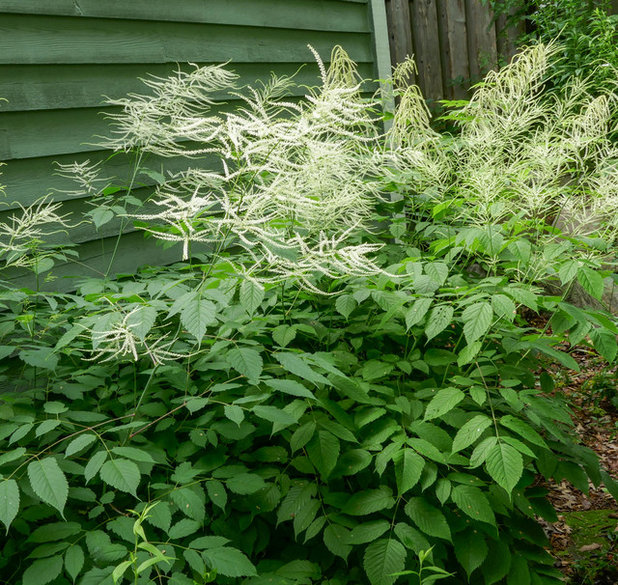
Holm Design & Consulting LLC
Botanical name: Aruncus dioicusCommon names: Goat’s beard, bride’s feathers
Origin: Native to the west coast of Canada and the U.S., including Northern California, Oregon, Washington and British Columbia. Goat’s beard also occurs in the East, from eastern Iowa southward to Arkansas and eastward to northern Georgia in the South and western Pennsylvania in the North.
Where it will grow: Hardy to minus 20 degrees Fahrenheit, or minus 28 degrees Celsius (USDA zones 5a to 7b; find your zone)
Typical plant communities: Moist woodlands in partial shade
Water requirement: Needs no additional watering once established as long as it is properly sited in a moist location
Light requirement: Partial shade
Mature size: 2 to 4 feet tall and 3 feet wide
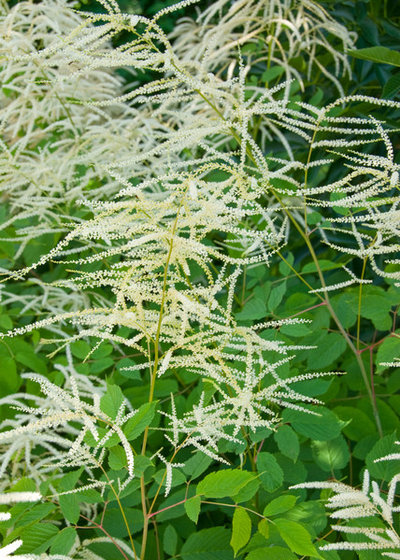
Holm Design & Consulting LLC
Benefits and tolerances: Tolerates shade and moist soil
Seasonal interest: Blooms in late May or early June in the upper Midwest; earlier southward
When to plant: Spring or fall; potted plants are available from most nurseries in areas where it occurs.
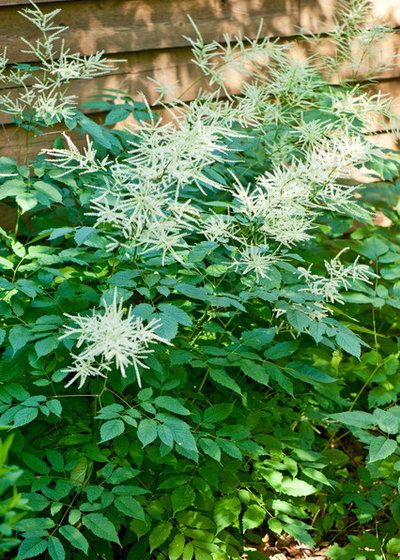
Holm Design & Consulting LLC
Distinguishing traits. Large, bold foamy white flowers held above light green foliage. Goat’s beard is much larger than many shade-tolerant herbaceous plants, so it can be used where you would use a shrub. The male plants tend to have showier flowers than the female plants, but if you want to attract a diversity of flower-visiting insects, make sure you have both male and female plants.
How to use it. Goat’s beard is similar in appearance to the cultivated
Astilbe spp., but keep in mind that goat’s beard is much larger than false spirea. It is best used massed in a moist, partially shaded location, such as a shady perennial garden, along a north- or east-facing house foundation, or under trees in a moist site. You could also incorporate this native perennial in a large rain garden in partial shade.
Combine it with native perennials that also thrive in moist soil in partial shade, including great blue lobelia (
Lobelia siphilitica), pink or white turtlehead (
Chelone spp.), American spikenard (
Aralia racemosa) and bigleaf aster (
Eurybia macrophylla).
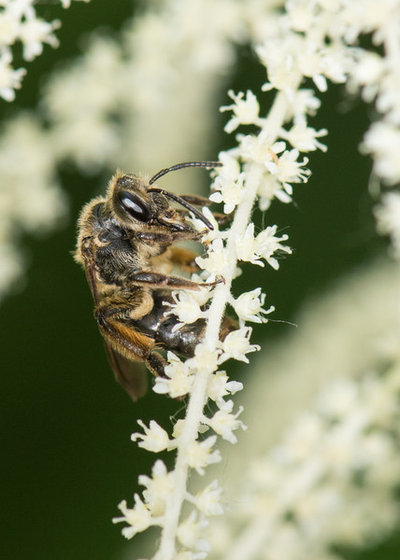
Holm Design & Consulting LLC
A female mining bee (Andrena sp.) foraging for nectar on female flowersPlanting notes. Goat’s beard is easy to grow as long as you site it in a location that remains moist. If you have a site in your landscape where water pools after a rainfall, this may be a good location for this native perennial. Because of its large size, the flower head will droop with the increased weight when the seeds begin developing. If desired, the seed heads can be removed to alleviate this. Otherwise, the foliage remains green throughout the growing season and provides a nice contrasting texture to other simple-leaved, shade-tolerant perennials.
If you live in the northern part of this plant’s range, it can also be used in moist locations in full sun.
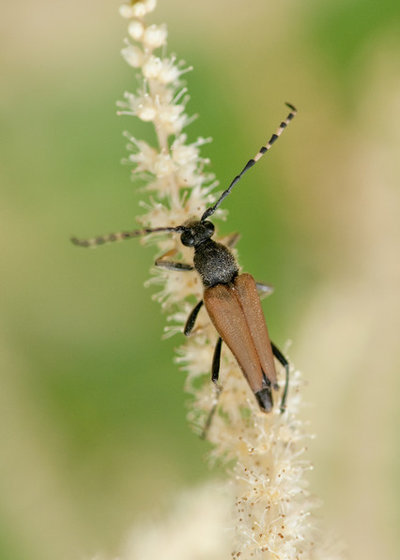
Holm Design & Consulting LLC
A flower long-horned beetlePollinator notes. Goat’s beard has separate male and female plants. Pollen-foraging beetles, flies and bees are common visitors to the male flowers. Look for bees and butterflies visiting the female flowers.
Goat’s beard also supports the specialist (oligolectic) mining bee (
Andrena spiraeana)
.





